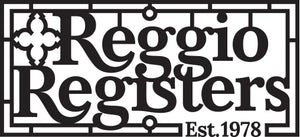How to Improve the Air Flow of Your Home HVAC System
Why 70% of People Hate Their HVAC
Of the 90% of American homes that have a forced air HVAC system, 70% of them aren’t happy with it. They have hot spots, cold spots, and lack much control except to adjust the thermostat (which affects the whole house).
HVAC systems usually have a single heating and cooling unit and ducts that run all over the house. It’s a great way to deliver heat and cooling in any season. The issue most systems encounter is based on one simple principle: air travels the path of least resistance. If every opening to the HVAC system is the same, most of the air will be delivered to the rooms closest to the HVAC unit and much less air will make it to the rooms furthest away from the unit.
The solution is simple, limiting the size of the openings closer to the HVAC unit and keeping the further openings fully open will create a more even distribution of air throughout the house. There are several ways to achieve this, all of which are referred to as “balancing airflow”.

How to Balance Airflow
Balancing airflow comes in two general options: adding something to the system that assists in moving air, and adding things that limit and direct airflow.
Assisting Airflow
The addition of secondary fans can help get the air all the way to that back bedroom that’s always too hot or too cold. These can be added internally (right inside the duct) or externally in the form of ceiling and floor fans in the room itself.
Directing Airflow
Adjustable louvers are the name of the game when it comes to directing and limiting airflow. Like fans, these can be added right inside the ducts or at the register where the air enters the room. An adjustable louver is designed to cover some of the opening of the duct into a room so that less air is directed into that room.

Directional louvers are another option for directing airflow. A directional louver is a series of angled slats set within a frame. These slats, or blades, are positioned in a specific direction, typically set at fixed angles and are designed to direct the flow of air in a specific direction. The directional louver is usually right behind the register. They direct air away from areas you don’t want air (like windows, walls, or doors) and toward areas you do want air (the center of the room or that hot/cold spot).
Your HVAC expert can help you find the perfect louvers to balance the airflow in your home.
Introducing Directional Louvers at Reggio Register
Reggio Register now offers a directional louver that comes attached to any of the laser-cut steel or aluminum registers. The slats sit at a 30 degree angle to direct air away from windows and curtains toward the center of the room.
DIY Airflow Fixes
Sometimes poor airflow in your home is fixed with a little maintenance. Check the vents in each room to ensure they are all open and directed appropriately (if you have adjustable louvers). Dirty, clogged filters can impede airflow as well. Be sure to replace these regularly. Pros suggest 1-6 months depending on the type of filter you have.

Regular duct cleaning is another thing you can do to keep the air flowing. If you have dirty air filters, a duct cleaning should be a priority as the dust and dirt can get into the system more easily. This isn’t just an issue of circulating air with particulates, but also impedes airflow. Experts suggest every 3-5 years should be sufficient to keep your ducts clean and clear. Schedule occasional inspections of your entire HVAC system to keep things in top shape
Ready to optimize your airflow? Improve the air flow of your home with a few simple fixes and preventative measures. Want to learn more about getting the most out of your HVAC.

